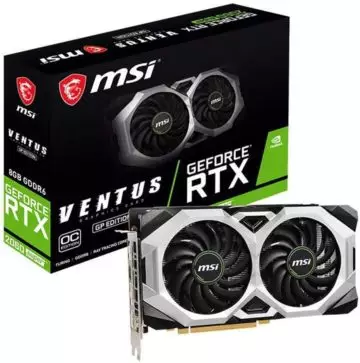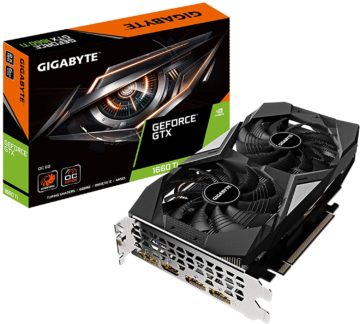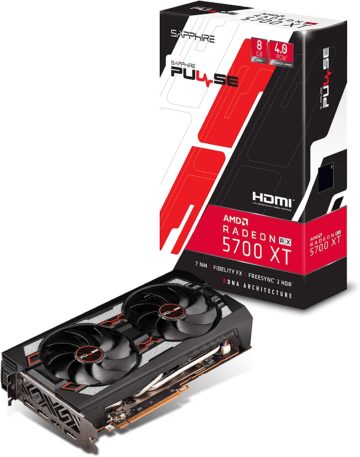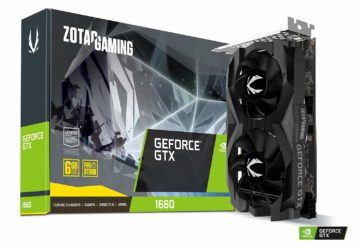Best cheapest 4K GPUs for Gaming/Video
Looking for the best cheapest 4K GPUs for gaming/video? We have list down and reviewed 6 of the best GPUs for gaming and videos here.
Buying a GPU or a graphic card isn’t as easy as you think. Your biggest deciding factor for a GPU is your monitor, if you want to game competitively and you have gotten yourself a 1080p 144Hz monitor there is no point in pairing it with an RX 6900XT, then you’re wasting your GPU’s potential provided it’s the only monitor you want to plugin. The GPU will be producing too many frames for the monitor to display and it won’t be able to keep up. If you have the budget, then invest towards other components instead of the GPU if you’re going to be gaming on a high refresh rate monitor such as a 1080p 144 Hz one.
Nonetheless, I am here to guide you where you can build a PC and include a GPU in there that doesn’t throw frames that are wasted, rather it pushes your monitor to the limit so that the refresh rate equals the frames per second and your GPU can perform in an optimum manner where you can get the most out of it without exceeding the monitor’s limit.
Before we proceed, let me just tell you that we also have an article here about what is a good idle GPU temperature that you can read on this site. So, here are the best GPUs for gaming at 1080p and 144hz.
| Award | Model | Price |
|---|---|---|
| Recommended Best GPU for 1080 144Hz monitor |
 MSI RTX 2060 Super Ventus
MSI RTX 2060 Super Ventus
|
Check Price Read Customer Reviews |
| Best Value for Money 1080P GPU |
 Gigabyte Windforce Gaming 1660 Ti
Gigabyte Windforce Gaming 1660 Ti
|
Check Price Read Customer Reviews |
| Best mid-high range 1080P GPU |
 Sapphire RX 5700 XT Pulse
Sapphire RX 5700 XT Pulse
|
Check Price Read Customer Reviews |
| Best Budget 1080P GPU |
 Zotac GTX 1660
Zotac GTX 1660
|
Check Price Read Customer Reviews |
So once again here are a few factors to consider before you finalize your decision.
As I mentioned before, the biggest bottleneck in your PC is your monitor and your GPU should be chosen according to it. If you’re going for a 4K 60Hz monitor then get the latest and top of the line GPU which is the RTX 3090. But in this case, your monitor has a 144 Hz refresh rate which means that it refreshes 144 times in one second. Sure, you can pair a 3090 with it but you would be wasting the potential of the GPU as screen tearing would occur. Instead pair a GPU that falls in the mid-range as far as budget is concerned, so that it just pushes the FPS as close to the 144 mark as possible.
You can find multiple benchmarks online to check a particular card’s performance at various resolutions. Many GPUs come with monitor syncing features such as G sync and Freesync so choosing from them would be a good idea.
These days GPUs come in all shapes and sizes from a single blower fan to dual or triple axial fans which keep the card cooler. A general rule of thumb is that the cooler a card is, the better it performs. So make sure you invest in a card that won’t overheat very quickly and start throttling and giving you fps drops. If you want to know how to use a speedfan and what is a safe motherboard temperature, we have articles for that.
Make sure you have ample space in your case and since it plugs into the motherboard, it shouldn’t restrict any space on the expansion slots of your motherboard.
Higher resolutions tend to take more VRAM on your GPU so make sure you choose a GPU that gives you a good playing experience while also giving you enough FPS at your desired resolution which is 1080p in this case. The minimum requirement for running games at 1080p is 4GB, but 8GB is the recommended requirement.
You’ll be well off with a GPU that has a DDR6 VRAM so that it performs all games at high frames as it performs quite efficiently as compared to its predecessors, DDR4, and DDR5. Although, there are DDR5X and DDR6X RAM GPUs too they’re too overpowered to pair with a 144Hz monitor.
Let’s start the list with the best GPU that is available which you can pair with a 1080p 144 Hz monitor. The MSI RTX 2060 Super Ventus is an upscaled version of the RTX 2060 which is an entry-level card for the 20 series. The GPU comes packed with 8GB DDR6 VRAM, 2176 CUDA cores, RT cores capable of ray tracing on the hardware level as well as DLSS technology too. It is one of the best GPUs available right now that can give you high frames which you can pair with a high refresh monitor such as a 144 Hz one. Moreover, if you ever feel the need to upgrade to 1440P you won’t need to spend extra cash to upgrade your GPU as this GPU performs superbly on 1440P as well.
The GPU is no pushover, due to its 2176 cores; you’re in for a treat if you game at 1080p resolution. The 34 RT cores give you a visual treat in games that support ray tracing and the 8 GB DDR6 VRAM keeps the gaming experience as smooth as possible at all times.
If there is no cap on the card, the card can pump out average frames in the range of 100-280 FPS, which can result in visual tearing, but fear not Nvidia has included the G-Sync technology which will slow down the GPU and make sure its syncs with the monitor’s refresh rate and you can continue to game on and get those high frags.
So gamers can get a GPU that doesn’t throttle at high temps, the MSI RTX 2060 Super Ventus has got a thermal design that includes open-air dual axial fans along with 6mm direct contact copper heat-dissipating pipes that will dissipate the heat generated by the card quickly and after setting a custom fan curve it won’t cross the 70 degrees Celsius mark. The fans don’t make that much of a noise at high RPMs as it won’t cross the 75dBA threshold.
It’s a factory OC version so it has better thermal and power limits. If you want to experiment and take things up a notch the GPU won’t let you down as it will let you play GPU demanding titles such as RDR2, witcher 3 and the AC Odyssey, Forza Horizon 5 at high visual preset settings.
This GPU is specially designed to appeal to the minimalistic aesthetic gamers as the card is small in size but that doesn’t mean it doesn’t come packing in features. The Fans are of the alternate Windforce design which will keep the GPU cool and won’t make much noise when it’s doing that but if your GPU will make unusual noises, check this article here about the causes and fixes of graphics card noise.
It’s one of the premium variants of the 1660 Ti chipset and while it lacks behind in ray tracing performance it will give you almost an equal experience to any entry-level RTX 20 series variant. It is one of the best GPUs in the market if you want to pair it up with a 144 Hz monitor.
The Windforce tech by Gigabyte makes sure that heat is dissipated quickly due to alternate spinning which reduces air turbulence and airflow out of the card as quickly as possible to keep the card running as cool as it can run. In GPU intense titles such as RDR 2, the card can deliver 40 fps and in titles like Valorant 140-160 FPS at 1080p high graphics. The card has substantial OC headroom so some tweaking will boost these frames further.
The 16 series was designed to game on 1080P and 1660Ti is the cream of the crop so it will give you great performance. While it doesn’t have the RT or Tensor cores but the GTX 16 series is based on the newer Turing architecture which significantly boosts the gaming performance of the cards over the previous GTX 10 series. With the Turing architecture and GDDR6 VRAM, the Gigabyte Windforce Gaming 1660 Ti is great for anyone wanting to game at 1080p. Moreover, the card’s form factor is a MicroATX one so anyone who has a MicroATX case should go for this card as it will fit quite snugly in there and its raw power should make up for a great gaming experience as well.
AMD stepped up their game when they came up with manufacturing both processors and GPUs on 7nm. This architecture based on 7nm came to be known as the RDNA architecture for GPUs and the 5700XT was their flagship GPU at the time that targeted the budget gamer. There was one catch though that these 7nm GPUs needed a lot of cooling. Sapphire did a great job of mitigating that problem by introducing dual axial fans on the GPU with 95mm in size which is capable of dissipating a large amount of heat at low RPMs so that the card runs cooler and quieter.
The Sapphire RX 5700 XT Pulse is no slouch in terms of specs: it is built on AMD’s RDNA architecture featuring redesigned SMs, efficient IPCs, 8 GB GDDR6 memory, 2560 cores, 160 texture units, and 64 render units which will take care of all your 1080p gaming needs. Since it comes overclocked by default from the factory the base and boost clocks have been shifted as well from 1605MHz and 1905MHz to 1670MHz and 1925MHz, which allows it to give around 150 FPS in even the most demanding gaming titles.
While the majority of AMD cards have been pretty bad for overclocking, this time AMD has worked on that and due to the robust thermal designs you have some room for Ocing and getting a little more FPS in games. Nonetheless, it’s a beast of a card and will give you great 1080p performance and even 1440P too so if you’re looking to upgrade to 1440P in the future you will be saving cash in the future by investing money into this card now.
If you’re on a budget and care about the space inside your MicroATX case, then I am recommending this card to you as this 8 Inch underdog will perform in a way that will exceed your expectations.
Due to its small size, the Zotac GTX 1660 tends to be quieter and its dual axial fan design keeps the card cool too. Your case temps may rise due to the GPU venting hot air out of itself but if you set a custom fan curve you are good to go.
Since the GTX 16 series is based on the Turing architecture, you will get the performance that you need from the card in your games. However, the GPU doesn’t contain RT and Tensor cores so you won’t be able to take advantage of Ray tracing and deep learning AI features that have become the selling point of the RTX series. However, in your case, it’s a good thing as not many games support it at this point and your money is better spent on getting a GPU that gives you good performance instead of some in-game features that the game can run without.
There is a performance trade though with this card as it may not be powerful enough to give 144 FPS in games that tend to be more GPU demanding so you might have to crank down your settings to get more FPS. However, Zotac has done a great job with their Firestorm software which lets you tweak the card to your heart’s content.
I have tried to include the GPUs that you can get right now to pair with your 1080P 144 Hz monitor. Many share my opinion that a good GPU for a 144 Hz monitor is a GPU that consistently gives FPS that fall between the 135-155 FPS range and which also comes packed with monitor syncing technology so that screen tearing can be avoided. Even though many titles come with an inbuilt vertical syncing option that forcefully causes your GPU to slow down and gives FPS that the monitor can show, but that result in an input lag and in competitive gaming where time is of the essence and decisions are made in milliseconds and nanoseconds hence a hardware sync technology is better which lets you sync your monitor refresh rate with the FPS being produced by your GPU, without any input lag being added to the mix.
You can either go with Nvidia’s 2060’s MSI Ventus variant which will give you a phenomenal experience along with ray tracing and DLSS and get the best 1080p experience or go for that Zotac’s 1660 which is a great budget option and lets you game in 1080P at high frames. Or if you’re an AMD fanboy then you can go with the Sapphire 5700XT which gives you a great experience in 1080p and also gives you room to upgrade should you want to upgrade to a 1440P display in the future. So, if you are curious if 1080p will look bad on a 1440p monitor, you can check our article about that.
When you purchase through our links, we may earn an affiliate commission at no additional cost to you.